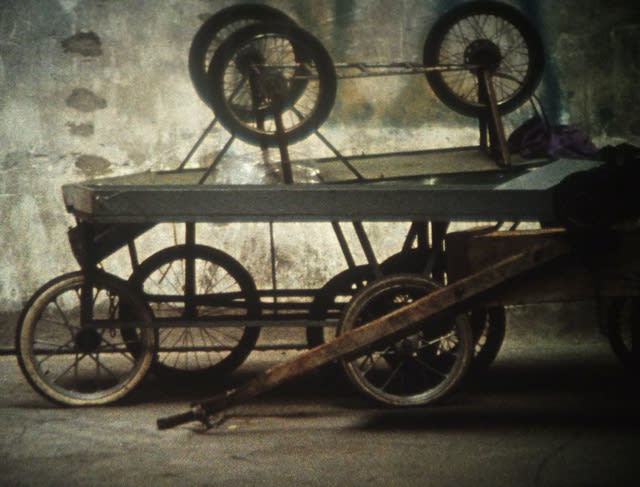Robert Beavers
(Excerpts of a conversation between Ute Aurand and Robert Beavers)
Can you describe from which point you start and how you developed The Stoas, from first thought to film?
I began with the intention to film vases and the space inside the vase that is not seen. I began with this idea ...
... quite abstract or from the Greeks?
I hadn’t decided whether the vases would be Greek or Chinese, but the starting point was more the form of the vase than decoration. I was attracted to the beauty of these simple shapes and then to the empty spaces of the arcades in Athens, and the image of my hands holding an empty space is developed from the idea of the vase.
Like holding one?
Yes, that was all that remained of my initial intention to suggest the space that is not seen inside the vase. The hands remained to suggest this space.
So first you wanted to film vases very directly? How did you leave this idea?
I had a sense that it would not work as a film image. The working title was originally Vases and Stoas. So the first elements of the film were the spaces of the vases and the arcades, but the vases were soon replaced by the hands holding an empty space, and the lens movements or camera movements also give you a filmic sense of this unseen space inside the vase. The camera angle and the hands suggest my presence, and one could say that I replace the vase with the lens.
Or with you. I think these camera and lens movements open the film beyond its realistic imagery to what I mean by ‘beyond meaning’... In the second part of the film, when we are coming to the stream, there I remember thinking that this stream is really filmed beyond realism, these images catch life, in its fundamental beauty and dimension of – I want to say ‘love’ – when does this third important element, the stream, enter the film?
I had edited the arcades with the images of my hands before I filmed the stream. I felt it was a way to expand both the idea of the arcades and the vase.
In which way?
Most vases contain a liquid, and the arcades, the space inside the arcades, flows just as the river flows between its riverbanks. I used the space of the arcades and the river to reflect on what is ascetic and what is sensuous, and, when I speak about the space inside the vase, I am also suggesting something for the senses to feel. This contrast of the ascetic and sensuous is reflected-upon through an intuition. A vase is the essential object or container, and these spaces allowed me to reflect, to accept limitation and gain calm.
When you speak about your films, your ideas and even your notes, they are in a way concrete. An idea is expressed in an image. Then you transform it, and it becomes something new, different from its first meaning.
The ideas and notes are steps that I consciously work with, but in the filming, I realized that the moment contained an important resolution. It is related to a sense of death and of seeing life from the other side. In this film a crisis was resolved, and the result was acceptance. My visits to the river and to the arcades were the occasion for this experience – this river gave an impulse, but I didn’t film, I waited until the next summer. (…)
